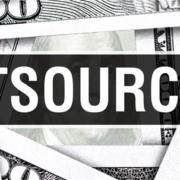Who ya gonna call!? For Disaster Recovery, it’s Your MSP.
Zap! Pow! Wham! These are comic book terms. But they could also refer to the noise you make while bustin’ ghosts. When you’ve got a ghost problem, the first people you should call are the Ghostbusters.
But when you need your data backed up properly, you should call us. We may not be equipped to remove the spiritual manifestation of ectoplasm from your network, but we know our stuff when it comes to disaster recovery.
Before we get too far ahead of ourselves, let’s take it back to the basics – what’s a disaster recovery plan, and why is it important to your business?
What is Disaster Recovery?
Disasters happen, and they happen frequently. Most people tend to think of fires, floods, earthquakes, and tornadoes when they think of disasters. However, there are much more common threats out there.
For example, a particularly nasty cyberattack can put a very real stop to your daily operations by holding your data hostage. Or, if the power goes out in your building, you’ll be left stranded without any ability to continue working. Perhaps you’ll be stuck without employees after Zuul, the Gatekeeper of Gozer, invades and terrorizes your city.
None of these are disasters in the traditional sense, but they both provide you with the same outcome – interruption of service known as downtime.
ITIC’s latest survey data finds that 98% of organizations say a single hour of downtime costs just over $100,000. To combat downtime, business need to have a disaster recovery plan. A disaster recovery plan is a term used to encompass a wide array of policies and procedures that tell you how to get back up and running in the event of a disaster.
Going without a plan is risky because it means you have no documented recovery process. 21% of small-business owners without a written disaster plan said they don’t have one because it’s not a high priority for them. In the short term, it inflicts your organization with more downtime (and therefore more costs).
The Steps to a Good Disaster Recovery Plan
The steps to creating a good disaster recovery plan are as follows:
- Assess your current infrastructure and operations
- Document how everything works so you can prioritize what your organization depends on. When you’re struck with disaster, you’ll know where to focus your recovery efforts.
- Assemble a team of Ghostbusters disaster busters
- Each person in your recovery team must have a clearly defined role that they are
qualified to do. This team must be able to communicate throughout the recovery process to ensure maximum effectiveness.
- Test your response rate and recovery success
- To ensure proper success in your recovery efforts, you must thoroughly test your plan. That includes practicing recovery drills every so often (we recommend quarterly or biannually). If you ever need to put the plan into effect, you’ll need to know that your business can rely on every aspect of it.
- Keep your plan, team, and documentation updated
- In business, things change in the blink of an eye. And when they do, you’ll have to proactively include these changes in your training and documentation. Without doing so, you’ll be stuck with outdated plans that won’t help you in the slightest when you need them most.
Following these steps will keep your business up and running through any disaster. We also recommend backing up your recovery plan with data restoration.











